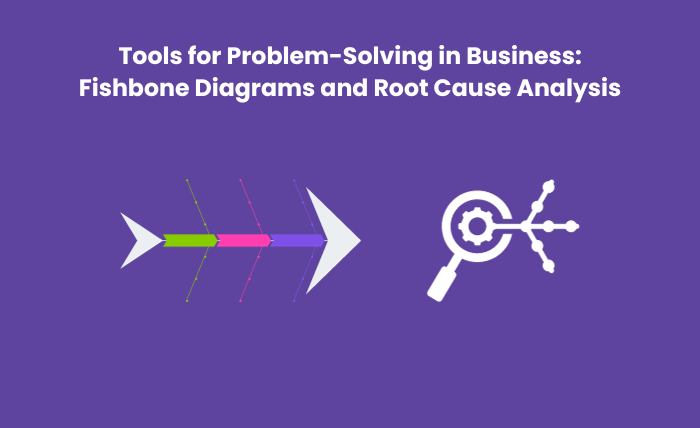Tools for Problem-Solving in Business: Fishbone Diagrams and Root Cause Analysis

In business, problems are inevitable. Whether it’s a bottleneck in a production process, a decline in customer satisfaction, or a drop in sales, identifying and resolving issues is a critical aspect of maintaining a successful operation. To tackle these challenges effectively, businesses turn to problem-solving techniques. In this blog post, we’ll explore two valuable tools for problem-solving in business: Fishbone diagrams and Root Cause Analysis. Additionally, we’ll discuss the relevance of these techniques in the context of Business Analysis Certification and Business Analysis Techniques.
Table of Contents
- The Need for Problem-Solving in Business
- Fishbone Diagrams: Uncovering Causes
- Root Cause Analysis: Delving Deeper
- Conclusion
The Need for Problem-Solving in Business
Issues and difficulties may emerge in every company, ranging from manufacturing and operations to customer support and advertising. These problems may reduce profitability, obstruct expansion, and impair efficiency. Consequently, to solve these issues and stop them from happening again, organisations require efficient problem-solving techniques.
A key element of business analysis, a discipline devoted to examining company requirements and identifying solutions, is problem-solving. At an organisation, business analysts are often at the forefront of problem identification and resolution. They need a strong set of problem-solving strategies to succeed in this position.
Fishbone Diagrams: Uncovering Causes
A Fishbone diagram is a visual aid for methodically analysing and comprehending the underlying causes of an issue. It is often referred to as an Ishikawa or Cause-and-Effect diagram. The diagram’s name comes from how it looks—it resembles a fish skeleton with many branches and a central spine.
Fishbone Diagrams’ Operation:
- Start by identifying the issue you are trying to solve, then represent it on the diagram as the head of the fish.
- Make branches that come out of the spine to symbolise all possible causes. People, Process, Equipment, Materials, Environment, and Management are often used categories.
- Hold brainstorming sessions under each area to determine potential reasons associated with the issue. This procedure promotes the investigation of many viewpoints.
- After you’ve compiled a list of probable explanations, look into each in more detail to ascertain its applicability and veracity. This might include research, interviews, or data analysis.
- Investigate more to find the source of the issue. These are the core problems that can be resolved if they are dealt with.
- Teams may better understand the connections between many factors and how they affect the issue by using fishbone diagrams. They provide an organised method for identifying the underlying reasons, allowing organisations to take focused action to resolve these problems.
Root Cause Analysis: Delving Deeper
Determining the fundamental causes of a problem or issue is known as root cause analysis, or RCA. It seeks to identify the underlying reasons for the issue, which, when removed or corrected, stops the problem from happening again.
Root Cause Analysis Steps:
- Make sure that all parties understand the nature and breadth of the problem or issue by clearly articulating it.
- Gather pertinent information, facts, and statistics about the issue. Reports, incident information, and employee or customer feedback might all fall under this category.
- Have brainstorming meetings to find possible causes and aggravating elements. These might be the issue’s direct or indirect causes.
- Examine the reasons found and use techniques like the “5 Whys” approach. To find the root reasons, this entails asking “why” several times.
- After determining the underlying issues, suggest and assess possible fixes. Instead of treating the symptoms, concentrate on the underlying problems.
- Implement the selected solutions, modifying systems, processes, or procedures.
- Keep an eye on things to make sure the issue doesn’t come up again. Take preventative action to avoid similar problems from happening again.
A systematic process known as “Root Cause Analysis” guarantees that issues are not only surface-level fixed but are eradicated at their root. It is a useful method for teams that solve problems and business analysts.
Conclusion
A key business component is problem-solving, and companies depend on efficient methods to deal with problems methodically. Organisations can find the core causes of issues and create focused solutions using useful tools like fishbone diagrams and root cause analysis. Gaining proficiency in these problem-solving methods is essential for professionals seeking certification in business analysis. Business analysts may effect good change and support the long-term success of their organisations by acquiring these competencies.




